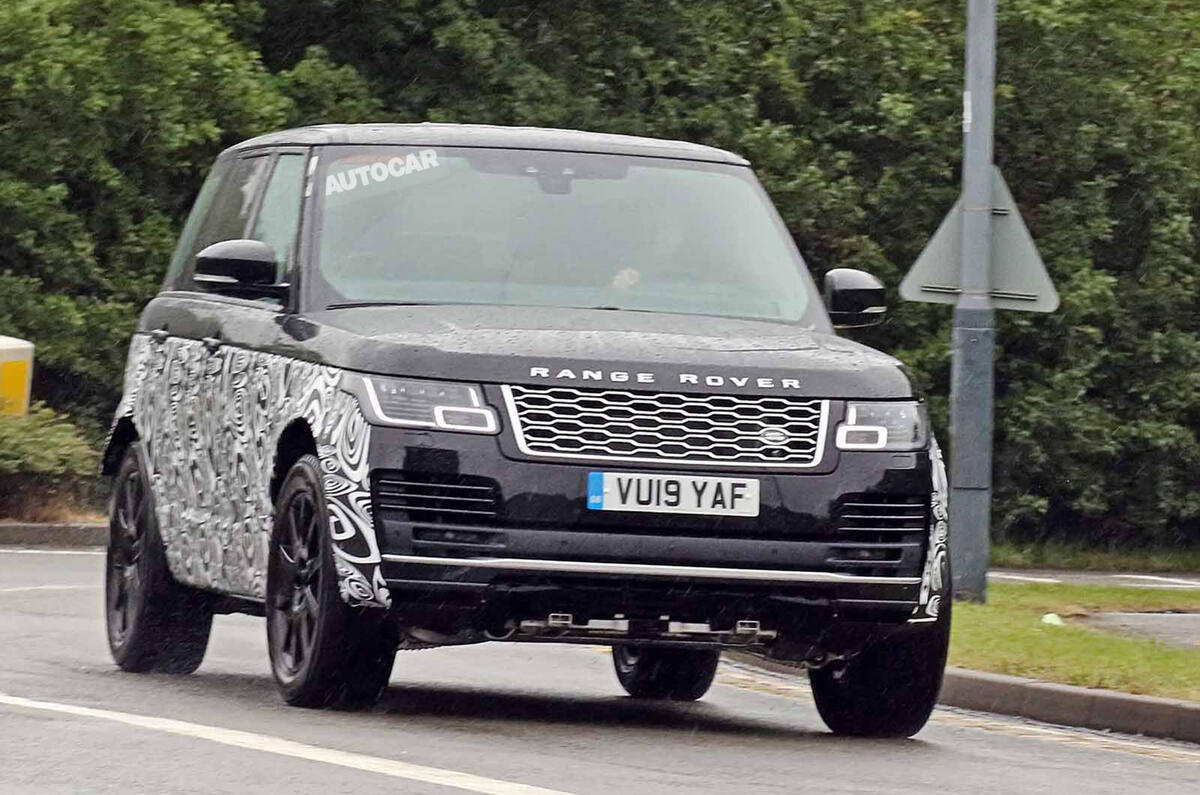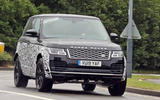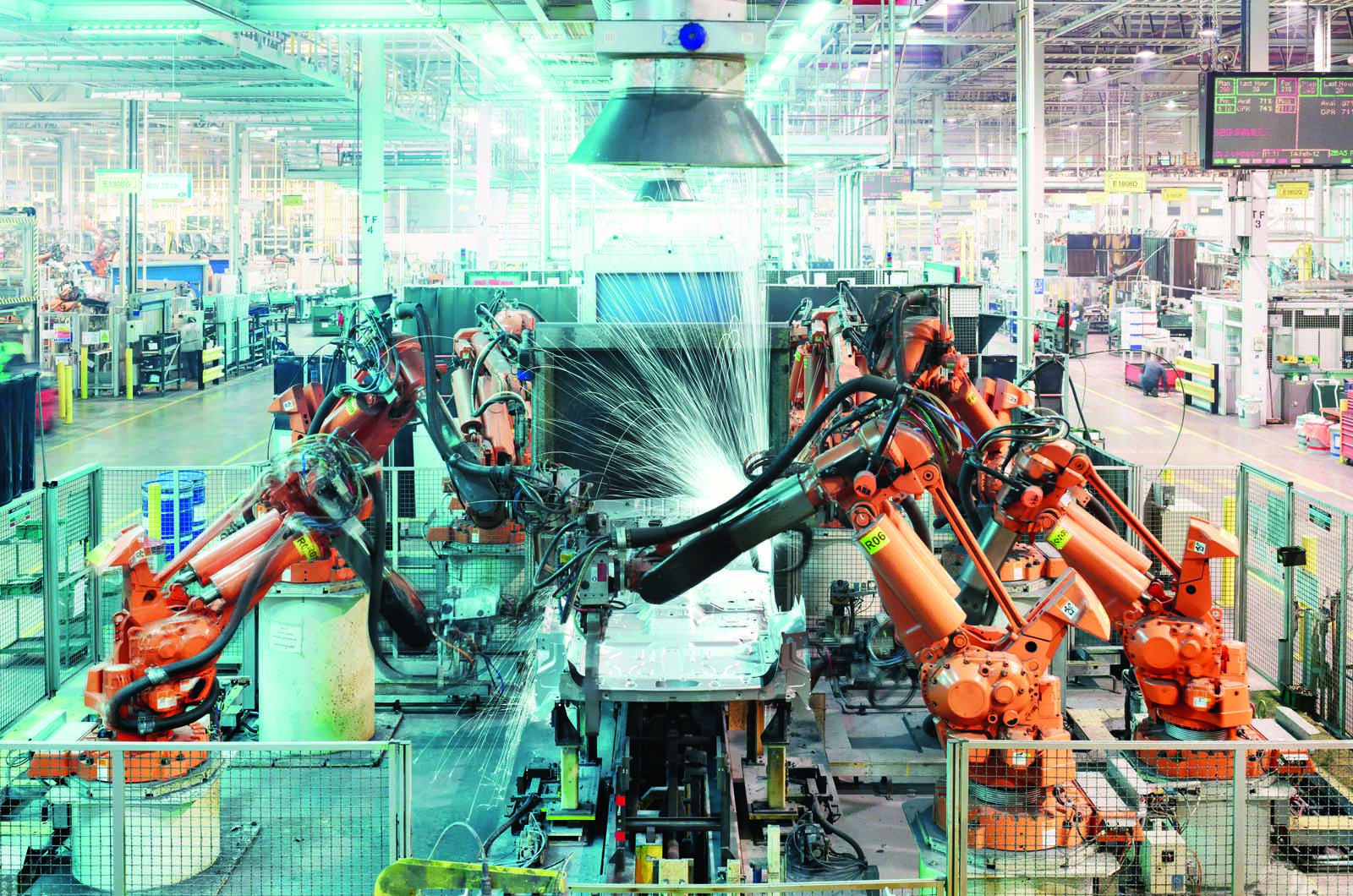Land Rover is readying an all-new version of its flagship Range Rover, and prototypes are now being tested on UK roads.
The latest test mule is wearing adapted bodywork of the existing model with different suspension and exhaust components visible. Autocar now understands that this mule has a BMW-sourced 4.4-litre petrol V8 engine under its bonnet.
Earlier rumours Jaguar Land Rover (JLR) would make use of BMW's turbocharged V8 in future offerings were fuelled further by a report that the two firms had agreed on a wide-ranging combustion engine partnership beyond their existing agreement to produce electrified powertrains together.
Land Rover plots comeback with hybrid-led new model blitz

Production of the outgoing ‘AJ' 5.0-litre supercharged motor is also winding down at Ford's Bridgend factory, which will close next year. JLR, overcoming various financial setbacks, is seeking greater economies of scale and less pressure to invest in future powertrains alone.
With six-cylinder diesel units also expected to come from BMW's stable, it remains to be seen whether - as previously expected - Jaguar Land Rover’s recently launched Ingenium straight six will feature in the new Range Rover.
The prototype also features stretched rear arches and a cutout in the rear bumper, necessary to accommodate the slightly longer wheelbase of the new underpinnings.
With competition from the Bentley Bentayga and Rolls-Royce Cullinan as well as upcoming, more mainstream models such as the BMW X8, Land Rover’s task with the fifth-generation Range Rover is to create a vehicle that surpasses all of these rivals. It will attempt do so using not only its unique heritage but also technological advancements in powertrains, autonomous driving systems and infotainment.




















Join the debate
Add your comment
Buying in the V8 makes sense,
Buying in the V8 makes sense, don't understand why they would buy in a 3L diesel, with their own Ingenium unit soon available
The current V8 diesel comes from Ford but is unaffected by the Bridgend closure, maybe it's this which will be replaced by a BMW unit
Mikey C wrote:
I think Ingenium has been a disaster, and no doubt partially responsible for the multi-billion capital write off earlier this year. The engines are nowhere near as efficient as claimed, and lack nice driving characteristics.
JLR cutting their losses here.
This is what's happening
I think JLR's engineers have probably thrown the towel in with the ingenium. It'll never be up there with BMW's diesel engines which are some of the best on the market.
In fact the sentence '...agreed on a wide-ranging combustion engine partnership....' is corporate speak for 'we've given up trying to make our own bloody engines - we'll use BMW ones instead from now on, they're better'.
If they never used that black
If they never used that black and white camo, would anyone recogise it is a new model, apart from a few spotters?
yes quite clearly, the rear
yes quite clearly, the rear is different, the exhaust system is different, the doors are different, the slats are gone, the grill and light arrnagement on the new car is different, and many other changes, however, this car is a MULE - and is runnign with about 90% of the existing car, like ALL COMAPNIES DO
jonboy4969 wrote:
I’m surprised the hideous fake side slats survived the facelift. Surely they won’t make it onto the next generation. One of McGovern’s rather frequent detailing errors (see also: Discovery tailgate).
Well you have proved my point
Well you have proved my point, a sad lonely guy in a anorak looking for variations on different cars. Do you get excited if you spot something unusual?
The only time I see a new 'mule' like this is when it has the camo on. The new Defender is a case in point. Then again I tend to concentrate on driving or riding rather than getting my kicks out of a new light arrangement on a Range Rover.
Nowt as queer as folk....
Well you have proved my point
Well you have proved my point, a sad lonely guy in a anorak looking for variations on different cars. Do you get excited if you spot something unusual?
The only time I see a new 'mule' like this is when it has the camo on. The new Defender is a case in point. Then again I tend to concentrate on driving or riding rather than getting my kicks out of a new light arrangement on a Range Rover.
Nowt as queer as folk....
For a 7yr old model the
For a 7yr old model the styling of the Range Rover has worn well. I hope the next version will be as clever evolution as JLR achieved with the new Evoke. I definitely think the RR look distinguishes them from the German and Japanese SUVs.